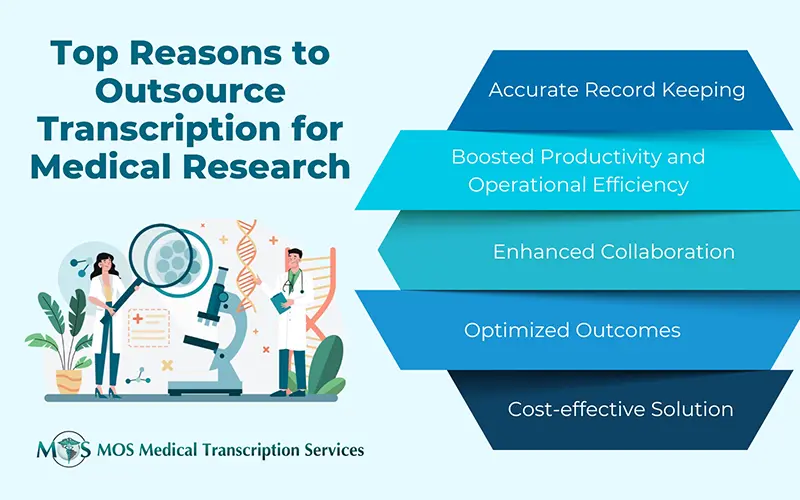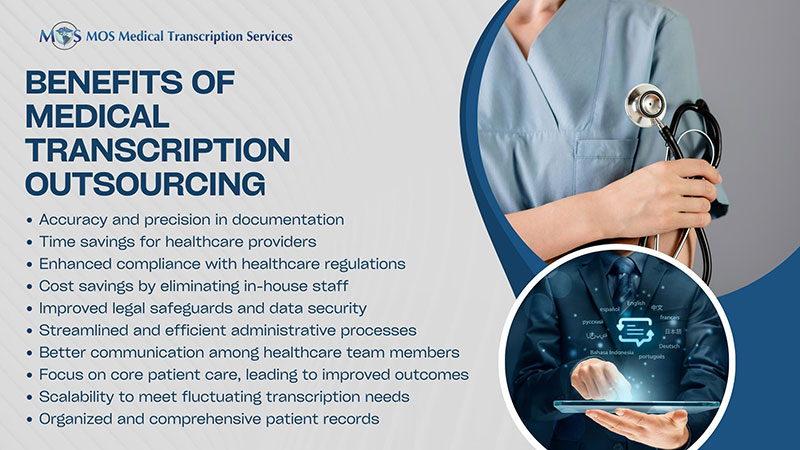The handoff of a patient from one physician to another is a frequent and unavoidable aspect of care. Medical transcription outsourcing helps health care providers produce the electronic component of the handoff. However, clinical handoffs are prone to errors due to breakdown in communication between care providers. In fact, handoffs have been found to be one of the most risky procedures in hospitals. A 2012 Joint Commission report, about 80% of serious medical errors occurred due to poor communication between providers during patient handoffs.

In addition to communication that is misspoken or misunderstood, errors often occur because of the failure to record information or due to information that is misdirected, never received, never retrieved, or ignored. Hospitals need to have proper measures in place to ensure a seamless handoff process by ensuring effective clinician-to-clinician communication to promote continuity of care, eradicate preventable errors, and improve patient safety. Here are some expert tips to effectiveness of clinical handoffs:
- Ensure accurate and complete written signouts: Effective communication means communication that is complete, clear, concise and timely. The Agency for Healthcare Research and Quality (AHRQ) points out that the I-PASS signout format put forward by a seminal study is regarded as the gold standard for effective signout communication between physicians and that it can improve the quality of nursing handoffs. “I-PASS” stands for:
- Illness severity: one-word summary of patient acuity such as “stable,” “watcher,” or “unstable”
- Patient summary: summary of the patient’s diagnoses and treatment plan
- Action list: to-do items to be completed by the clinician receiving signout
- Situation awareness and contingency plans: instructions to follow if there are changes in the patient’s status
- Synthesis by receiver: an opportunity for the receiver to ask questions and confirm the plan of care
- Convey the unique needs of each patient: In a recent report, the American Medical Association (AMA) advises medical residents to ensure that they communicate the unique needs of the patient during the handoff. The daily progress note should clearly communicate the physician’s findings, thoughts and plans. However, the misuse of copy-paste functionality in the electronic health record (EHR) often compromises the reliability of the patient information, affecting the clinical handoff process. Copy pasting should be confined to verified, static information such as demographic information, drug lists, and previous medical history. When handing off patients, providers should ensure that relevant and important information about each patient is conveyed. Situational awareness should also be conveyed in an “if-then” format. On the other hand, if the physician is permanently signing away the patient, it would be important to convey more details in terms of history and other matters.
- Take steps to improve communication during handoffs: This includes:
- Discussions in an environment without distractions: The American College of Obstetricians and Gynecologists (ACOG) says that the circumstances, setting, and content of the handoff communication should be based on clinical acuity of the patient’s condition.
- Maintain confidentiality: Due consideration should be given to confidentiality and Health Insurance Portability and Accountability Act regulations when conveying patient information.
- Use standardized medical terminology: The documentation involved in the clinical handover should be prepared using standardized medical terminology. Medical transcription outsourcing can ease this task. Reliable medical transcription companies have trained and experienced team well versed in medical terminology and jargon. These experts can provide quality documentation of all types of reports including history and physical reports, clinic notes, consultation reports, procedures, ER reports, follow up notes, and health reports.
- Assign responsibility: ACOG recommends that each patient should be assigned to a primary person or team that will also manage the transfer. If the primary contact is unavailable, there should be a backup system.
- Method of communication: Providers can use verbal communication, written communication, or both. Face-to-face exchange of information is the preferred option because it allows for direct interaction and expression of nonverbal information by expression and body language. On the other hand, written communication allows the information to be relayed in an organized, hard copy format, which is important for reference.
- Documentation: Relevant demographic information, history, physical exam results, an active problem list, medications and allergies, pending test results, ongoing or anticipated therapy, key patient values and preferences, and all other critical information should be clearly documented in the patient’s medical record. This is where medical transcription services come in handy.
Providers should keep in mind that malpractice dangers lurk in patient handoffs. Medscape reported that though hospital care has significantly improved over the years, a study of malpractice claims by The Doctors Company found several incidents of preventable harm to patients, often due to a failed handoff. ACOG notes that barriers to effective communication include factors such as lack of time, hierarchies, defensiveness, varying communication styles, distraction, fatigue, conflict, and workload. Having an environment free of interruptions and distractions is critical to effective handoffs. Medical transcription outsourcing is an effective strategy to ease documentation workload and help clinicians find more time to engage in discussions and manage patient care and handoffs effectively.


